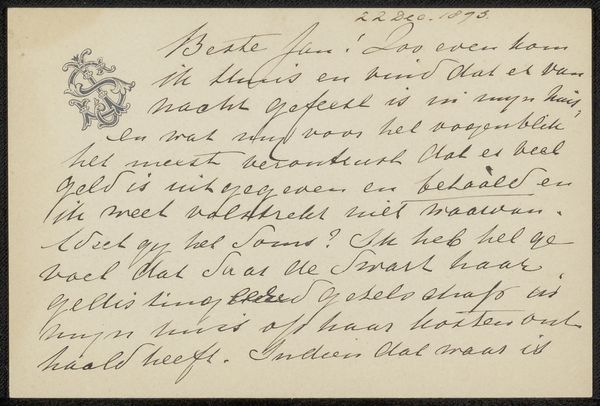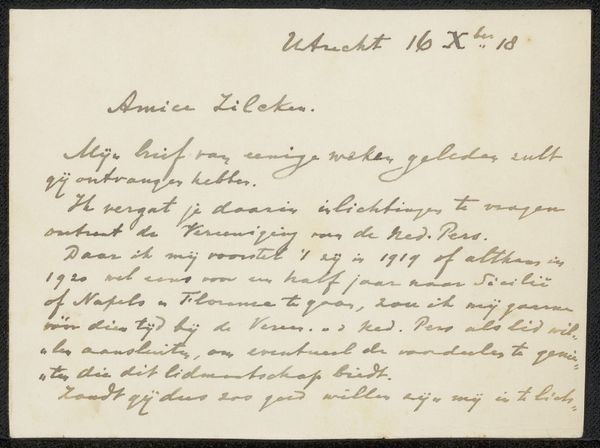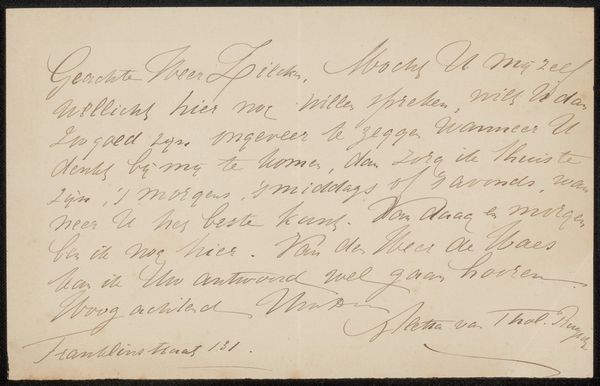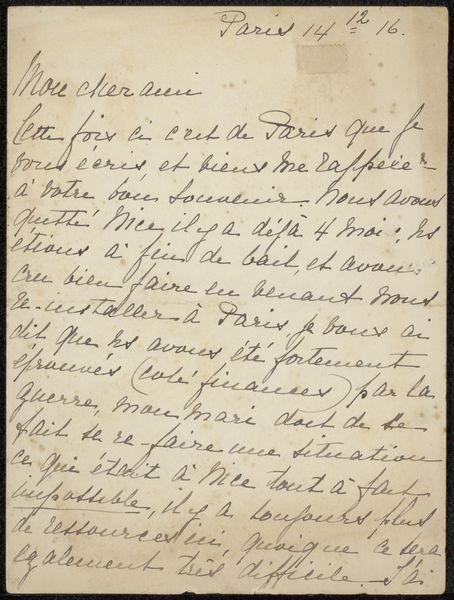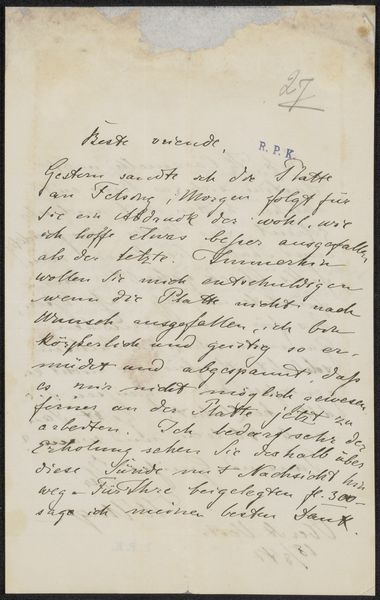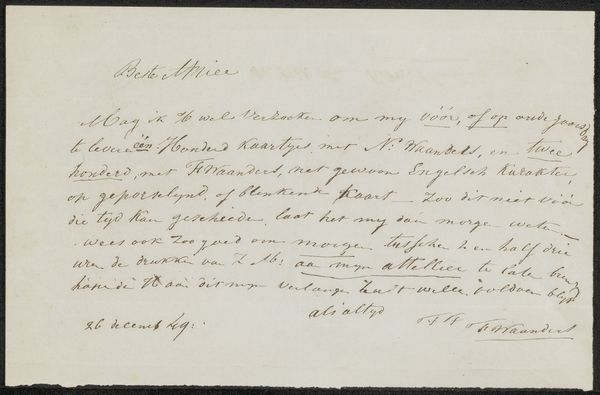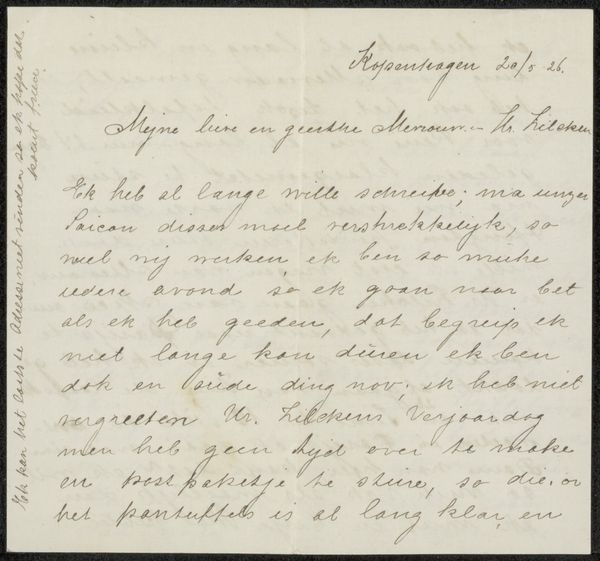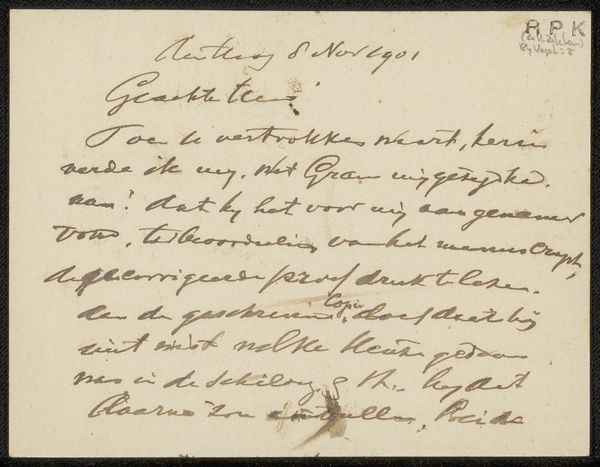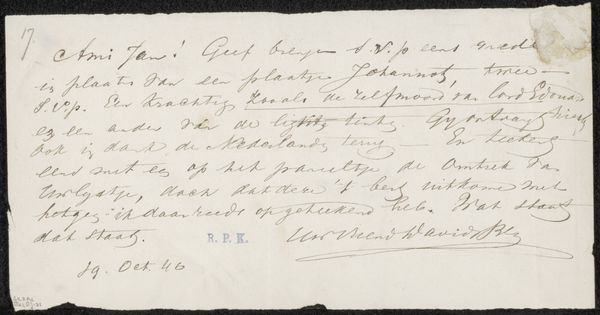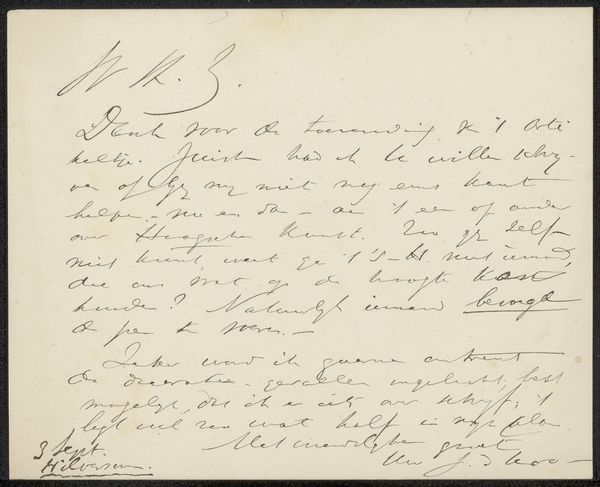
Copyright: Rijks Museum: Open Domain
Curator: I'm drawn to this intimate piece, "Brief aan Anna Dorothea Dirks," dating from between 1873 and 1918, crafted by Wally Moes. It's ink on paper. What whispers does it evoke for you? Editor: Well, right off the bat, a poignant melancholy. It's the slant of the handwriting, the aged paper... It feels like uncovering a private, whispered sentiment lost to time. What do you see, looking at this "letter"? Curator: It strikes me as so wonderfully ordinary, which elevates it, paradoxically. Just a snippet of daily life made visible. Look at the confident flow of the ink; it breathes with purpose. Editor: Precisely! And consider its social life—did it travel hidden in a pocket, or lie upon a desk, visible to any passerby? It’s not just a communication, but also a material object moving within social spheres. Curator: The handwritten text pulls at something universal within us, don't you think? It is accessible in its intimacy, its frank openness. Editor: Yet, isn't it the institutions – the academies, the galleries – that bestow the status of "art" upon such fragments of ephemera, distinguishing them from countless similar artifacts lost to history? Is its artistic merit intrinsic, or culturally conferred? Curator: I wrestle with that question constantly. For me, it's about the resonance. This "Brief" whispers of lives lived, and reminds us to cherish the fragile beauty of everyday encounters. It touches something beyond words. Editor: Yes, a powerful intersection of history and artistry. It reminds us that even the smallest artifacts carry echoes of a time, shaped by unseen social forces. Curator: A message across the years. Profound! Editor: A humble reminder of how art and daily lives can touch.
Comments
No comments
Be the first to comment and join the conversation on the ultimate creative platform.
